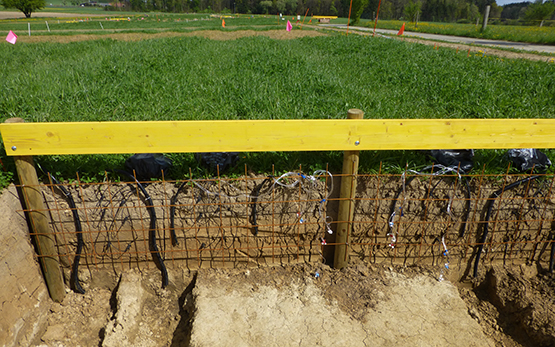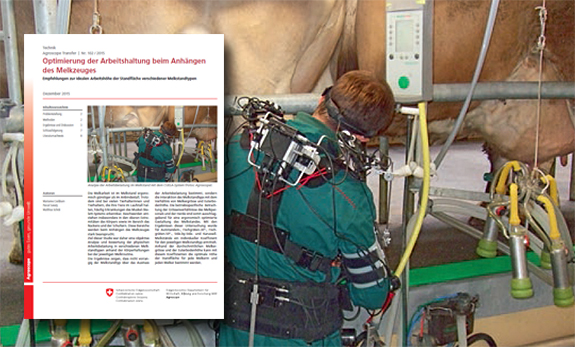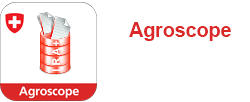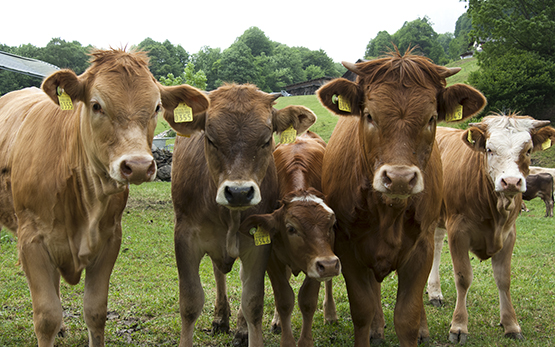Jeker L., Grossar D., Droz B., Camenzind D., Poiger T., Kast C., Meissle M. P., Charrière J. D., Straub L., Knauer K., Kimmel S.
Bee risk assessment for the authorization of plant protection products in Switzerland in transition: An overview.
Dans: International Symposium on Honeybee Risk Assessment. 25 September, Ed. National Institute of Agricultural Sciences (Korea), Jeonju (KR). 2024.
Brunner S., Weichert H., Meissle M., Romeis J., Weber H.
Field trials reveal trade-offs between grain size and grain number in wheat ectopically expressing a barley sucrose transporter.
Field Crops Research, 316, 2024, 1-12.
Meissle M., Grabenweger G., Romeis J.
No interaction of fluctuating or constant temperature and virulence of entomopathogenic fungi in two noctuid species.
Journal of Pest Science, 97, (2), 2024, 809-823.
Meissle M.
Prey-mediated effects of Mpp51Aa2-producing cotton on longevity and reproduction of Orius majusculus.
Transgenic Research, 33, (3), 2024, 75-88.
Meissle M., Chen Y., Romeis J.
Daphnia magna as an indicator for aquatic species in the non-target risk assessment of genetically modified maize.
Dans: SETAC Europe 34th Annual Meeting. 6. May, Sevilla (ES). 2024.
Chen Y., Meissle M., Xue J., Zhang N., Ma S., Guo A., Liu B., Peng Y., Song X., Yang Y., Li Y.
Expression of Cry1Ab/2Aj protein in genetically engineered maize plants and its transfer in the arthropod food web.
Plants, 12, (23), 2023, 1-13.
Schlathölter I., Broggini G., Studer B., Meissle M., Romeis J., Patocchi A.
Field investigation of consequences from the genetic modification resulting in the fire blight resistant cisgenic apple line C44.4.146.
Dans: XXXI International Horticultural Congress (IHC2022): International Symposium on Breeding and Effective Use of Biotechnology and Molecular Tools in Horticultural Crops. Ed. ISHS Acta Horticulturae. 2023, 1-8.
Boss A., Romeis J., Meissle M.
Prey-mediated effects of mCry51Aa2-producing cotton on the predatory nontarget bug Orius majusculus (Reuter).
Insects, 30, (4), 2023, 1191-1206.
Meissle M., Waldburger M., Jeanneret P., Broggini G., Patocchi A., Romeis J.
Insect pollinator monitoring in and around a netted plot of apple trees: Biosafety implications for genetically engineered fruit trees.
Agronomy, 13, (84), 2023.
Meissle M., Romeis J., Naranjo S.E.
Bt maize and non-target animals: A systematic review.
Dans: IOBC-WPRS Proceedings of the ninth meeting. 28-30 September, Ed. IOBC-WPRS, Berlin. 2023, 69-75.
Meissle M., Middelhoff U., Bartsch D.
Working group modern Biotechnology in integrated plant production: Proceedings of the ninth meeting at Berlin, Germany, 28-30 September, 2022.
IOBC-WPRS, Berlin. 2023, 132 pp.
Meissle M.
How to combine innovation and precaution towards more sustainable agriculture: Considerations for a new way forward.
Dans: IOBC-WPRS Proceedings of the ninth meeting. 28-30 September, Ed. IOBC-WPRS, Berlin. 2022, 61-68.
Schlathölter I., Broggini G., Meissle M., Romeis J., Studer B., Patocchi A.
Multi-level assessment of field-grown cisgenic apple trees.
Dans: Proceedings of the XV EUCARPIA Symposium on Fruit Breeding and Genetics. 1307, Ed. ISHS, Acta Horticulturae. 2022, 239-246.
Schlathölter I., Meissle M., Boeriis T., Heimo D., Studer B., Broggini G., Romeis J., Patocchi A.
No adverse dietary effect of a cisgenic fire blight resistant apple line on the non-target arthropods Drosophila melanogaster and Folsomia candida.
Ecotoxicology and Environmental Safety, 241, 2022, 1-9.
Meissle M., Naranjo S. E., Romeis J.
Database of non-target invertebrates recorded in field experiments of genetically engineered Bt maize and corresponding non-Bt maize.
BMC Research Notes, 15, 2022, Article 199.
Meissle M., Naranjo S. E., Romeis J.
Does the growing of Bt maize change abundance or ecological function of non-target animals compared to the growing of non-GM maize? A systematic review.
Environmental Evidence, 11, 2022, 1-36.
Chen Y., Romeis J., Meissle M.
No adverse effects of stacked Bacillus thuringiensis maize on the midge Chironomus riparius.
Environmental Toxicology and Chemistry, 41, (4), 2022, 1078-1088.
Chen Y., Romeis J., Meissle M.
Addressing the challenges of non-target feeding studies with genetically engineered plant material – SmartStax maize and Daphnia magna.
Ecotoxicology and Environmental Safety, 225, 2021, 1-23.
Meissle M., Kloos S., Romeis J.
Fate of multiple Bt proteins from stacked Bt maize in the predatory lady beetle Harmonia axyridis (Pallas) (Coleoptera: Coccinellidae).
Environmental Pollution, 268, 2021, 1-18.
Schlathölter I., Dalbosco A., Meissle M., Knauf A., Dallemulle A., Keller B., Romeis J., Broggini G., Patocchi A.
Low outcrossing from an apple field trial protected with nets.
Agronomy, 11, 2021, 1-11.









